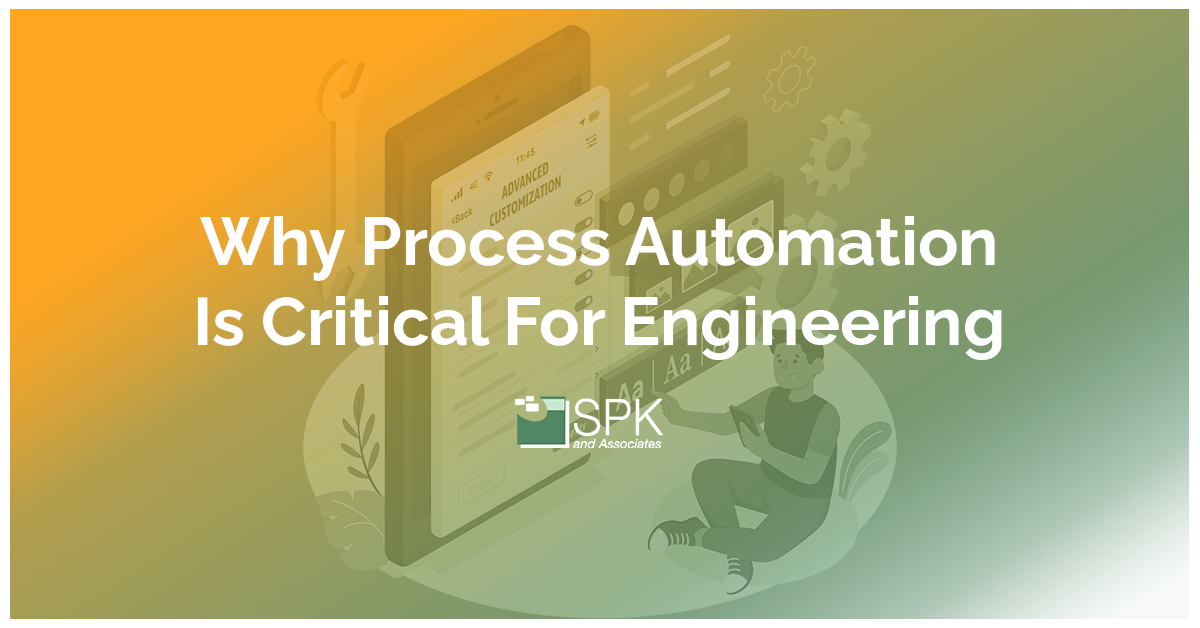Process automation releases your engineers for the work their brains are intended for. That work is creativity and problem-solving.
By implementing process automation, you improve the team’s morale. Firstly, they get more focus time for deep work and designing better products. Secondly, automation processes have the ability to help you stand out in the market. Ultimately, you can increase speed to market, and create a higher-performing engineering team.
What Is Process Automation?
The roots of process automation lie in mechanical automation In 1620, Dutch scientist Cornelius Drebbel invented the thermostat, which is the world’s first automated device. Fast forward to 1905 and the first automated glass bottling plant opened. A two-man team managed to produce 17,280 in just 24 hours. That is compared to the manual glass blower teams of six men who could produce 2,880 bottles in the same time period.
However, the roots of software automation lie in the phone system.The first dial telephones were introduced in 1892. With them came automated telephone switchboards. By 1929, nearly a third of the Bell System was automated. This relied on vacuum tubes consuming so much energy. It was feared that the phone system would soon require all available power in the United States. This prompted the development of the transistor.
Any task that is repetitive and follows a set procedure is ripe for process automation.
Key Benefits Of Engineering Automation.
Increased Speed To Market
Today’s customers expect quick revisions and an almost breakneck time-to-market.
In the worst-case scenario, your competitors could beat you to market with a similar product. You could lose market share and trust as an innovator.
Therefore, when considering automation, the key question isn’t how much it will cost to automate processes. It’s how much it will cost your business to NOT automate. That cost isn’t just linked to the selling of the end-product either. It’s also the cost of failing to attract new talent.
The tech world is evolving. Automation processes are becoming increasingly expected. New creative talent will be attracted to companies that allow them to design. Not complete tedious tasks.
Reduced Error Risks
Process automation has been fundamental to organizations across the globe. It has removed the tedious tasks humans become too attuned to. It’s these tasks that cause things like slower speed to market, fixing human errors and quality impact due to “boring” tasks.
Humans are notorious for becoming complacent when there is predictability within a task. It’s this complacency that introduces errors. Computers, on the other hand, are excellent tedious task operators. They thrive on predictability.
Improved Engineer Morale
Ed Chung is Director of Engineering at SPK and Associates. He notes that in his early career at Stanford School of Medicine he was assigned repetitive and redundant tasks.
“I felt like my time was being wasted. No engineer wants cutting and pasting into an Excel spreadsheet to be part of their job description.”
It’s a typical scenario for many engineers or businesses that haven’t invested in process automation. The great minds that are the future of organizations, just like Ed, are tied up with those tedious tasks. Therefore, they are distracted from their core capability and stymie innovation.
Removing these tedious, “easy” tasks removes shallow work. It gives them more design focus time.
Use Case For Automation: Testing Automation
Use Case: Testing Automation.
1. Regression testing is a perfect example of repetitive and tedious work. Automating this process frees your engineers up to tackle more engaging and rewarding tasks. Additionally, this increases value and raises morale. Tasks like regression testing become more accurate and error-free when automated.
2. Debugging and logging are two more laborious and uncreative tasks unworthy of engineer creativity. Moreover, they are highly repetitive and stable. Therefore, they are low-hanging fruit for automation.
3. Revision changes are normal during the testing period. This can be a highly cumbersome process, particularly for FDA regulated MedTech organizations. An automated revision system can save you thousands of hours every year. Here’s how it works:
-
- The automated system downloads the old document.
- The automated system downloads the new document.
- Both documents are plugged into a comparison tool (i.e. Adobe Acrobat or Microsoft Word).
- The result is uploaded with only the revisions highlighted, ready to be checked by the relevant engineers.
Use Case: Infrastructure-As-Code Testing
Infrastructure as Code (IaC) allows for a modular and easily deployed infrastructure. Within this software is a pre-defined infrastructure where there is both stability and repeatability.
IaC allows for automated tests, picking out bugs, spotting configuration errors, identifying connection errors and troubleshooting tasks. Automation provides a myriad of benefits from cost reduction to efficiency. It can make up for a lack of engineering skill sets by carrying out tasks that might require three engineers,
Automation processes give time back to your Ops team. Finally, they can spend their time completing engaging, empowering work.They can overcome important challenges rather than just babysitting servers or performing unfulfilling backup tasks.
How To Identify Process Automation Opportunities.
Automation processes often affect multiple functions and engineering groups. Therefore, you require collaboration between multiple areas. Start by holding collaborative sessions for engineering teams to explore opportunity areas for IT automation.
There are four key themes that can help identify automation opportunities:
- Repeatability: Look for tasks that will be performed hundreds or even thousands of times. That’s where you’re going to get a solid return on your automation investment.
- Stability: Tasks that are constantly changing can be automated. However, it’s far more difficult and time-consuming to do so. Look for stable tasks that are less-likely to change.
- Complexity: Similarly, the quick and easy wins in automation are found in simple tasks rather than incredibly complex ones.
- Wastefulness: Some tasks are simply wasteful when performed by engineers. For example, the copy and paste task Ed Chung mentioned earlier in this blog. Don’t pay engineers to complete wasteful tasks. Automate these tasks instead.
Now you have identified your potential automation processes, create a matrix of which are low hanging fruit, or quick wins. The calculation for quick wins is:
Increased quality x increased engineering morale/ease of automation.
Conclusion
Automation promises to transform your engineer’s workload from a series of low-value tasks into high-value deliverables. Ultimately, it can increase creativity, speed to market, morale and reduce errors.
However, automation cannot perform original creation. It can simply replicate the repetitive creation.
If you need support creating your automation matrix, or even identifying your potential automation processes, you can contact our expert team for a no-obligation discussion.







